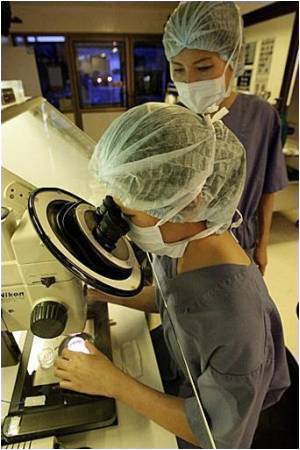With everything being digitalized,was a digital embryo that far-fetched?
With everything being digitalized,was a digital embryo that far-fetched?
"Non-transparent samples like the fruit fly embryo scatter light, so the microscope picks up a mixture of in-focus and out-of-focus signal– good and bad information, if you like," says Ernst Stelzer, whose group carried out the project at EMBL. "Our new technique enables us to discriminate between that good and bad information, so it allows us to record organisms which have so far been poorly studied, because of their unfortunate optical properties."
Philipp Keller, who co-led and conducted the work, and Ernst Stelzer overcame the difficulties caused by thick, opaque samples, by shining patterns of light on them, instead of the usual continuous light sheet. This generates an image with alternating light and dark stripes, unless the light bounces off the sample and changes direction, in which case this stripy pattern will be blurred. By taking multiple images of different phases of the light pattern, and combining them, a computer can filter out the effects of scattered light and generate an accurate image of the sample, thus enabling scientists to record images that were previously unobtainable.
Source-Eurekalert
